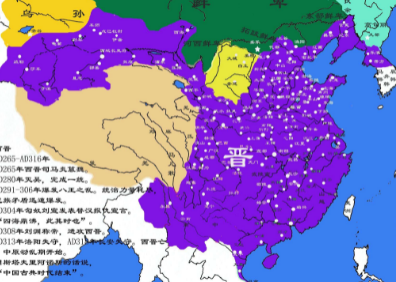The "Jin Dynasty" in Chinese history is a period carrying rich historical events, which is divided into two stages: the Western Jin Dynasty and the Eastern Jin Dynasty. Understanding the historical order and status of the Western Jin and Eastern Jin is crucial for deeply understanding the political changes and cultural characteristics of this period.

I. The Western Jin Dynasty: The Beginning of the Jin Dynasty
The Western Jin Dynasty was the first stage of the Jin Dynasty, marking the beginning of its history. It was established by Sima Yan in 265 AD, ending the divided situation of the Three Kingdoms period and unifying China. The Western Jin inherited the territory of the Cao Wei and reached the peak of its territory during the Tai Kang period. However, due to internal strife and external threats, the Western Jin was destroyed by the Huns in 316 AD, lasting only 51 years.
II. The Eastern Jin Dynasty: The Continuation of the Jin Dynasty
Following the fall of the Western Jin Dynasty, the Jin royal family moved south, and the Eastern Jin Dynasty was established. The capital of the Eastern Jin was set in Jiankang (now Nanjing), and its rule was mainly in southern China. Although the Eastern Jin nominally continued to rule China, it actually coexisted with the sixteen states in the north. The Eastern Jin lasted for about 103 years and was eventually replaced by Liu Yu in 420 AD, establishing the Song Dynasty of the Southern Dynasties.
III. Historical Significance of the Western Jin and Eastern Jin
As the beginning of the Jin Dynasty, the existence of the Western Jin is of great significance for the unification of Chinese history. Its brevity and end also marked the beginning of a long period of north-south division in Chinese history. The Eastern Jin, on the other hand, is the continuation and development of Jin culture and politics, and its existence in the south provided a platform for the development and cultural exchange of southern China.
IV. Conclusion
Although both the Western Jin and Eastern Jin are referred to as "Jin" in history, they have different positions and roles. The Western Jin is the beginning of the Jin Dynasty, marking a new era in Chinese history, while the Eastern Jin is the continuation and development within this era. By understanding the historical order and characteristics of the Western Jin and Eastern Jin, we can more comprehensively grasp the historical context of the Jin Dynasty and even the entire period of the Southern and Northern Dynasties.
Disclaimer: The above content is sourced from the internet and the copyright belongs to the original author. If there is any infringement of your original copyright, please inform us and we will delete the relevant content as soon as possible.
































